Skate shoes are an unusual type of footwear, as they are rapidly destroyed during the act of skateboarding. Abrasion with the grip tape during flip tricks and ollies wears through the upper, blows out stiches, and cuts through laces. Thin soles are preferred for better board feel, but at the same time impact protection must be considered. Most skate shoes today look something like this:
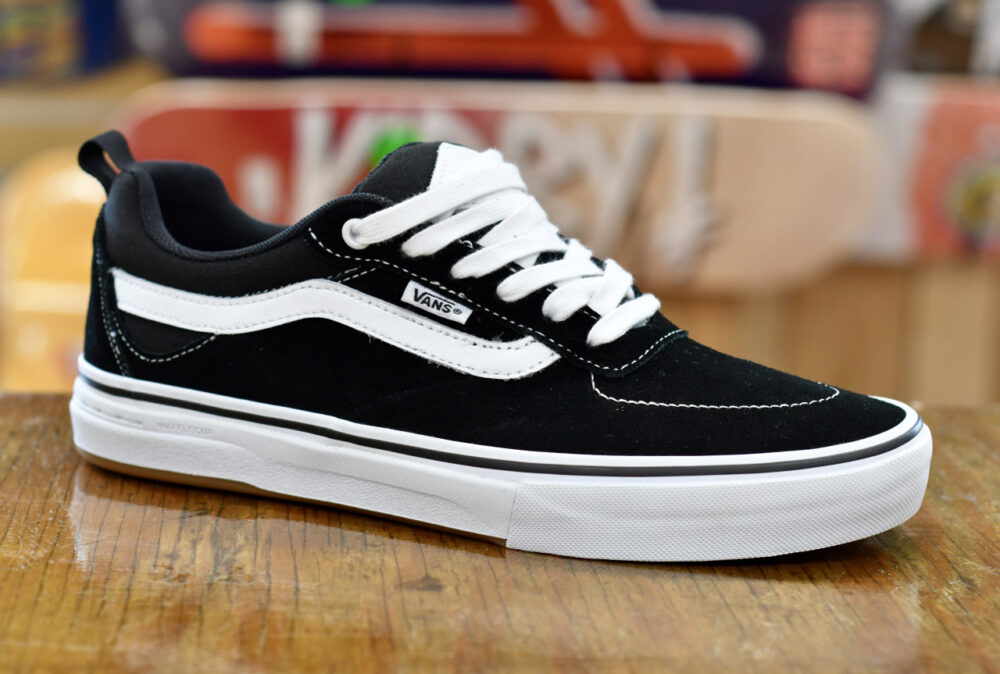
In contrast, skate shoes produced from the late 90’s up to the early 2000s tend to have a very specific aesthetic, with huge tongues, lots of padding, and futuristic, excessive design language. Skate shoes from this time period look very unusual compared to anything before or after. Shown below is a page from a mail order catalogue from the time period:

The shoes pictured here are a great example of this aesthetic. They are constructed with lots of panels, contrasting colors, and chunky profiles. Design elements and features are unnecessary and excessive, and are often futuristic. This sort of “tech” aesthetic was the standard for skate shoes at the time.
This aesthetic was popularized by skate shoe brands like eS shoes, DC Shoes, and Osiris, among many others. Notable skaters and designers at this time include Danny Way and his brother Damon Way (founder of DC), Frank Boistel (Designer at eS shoes), and Josh Kalis (pro skater for DC).
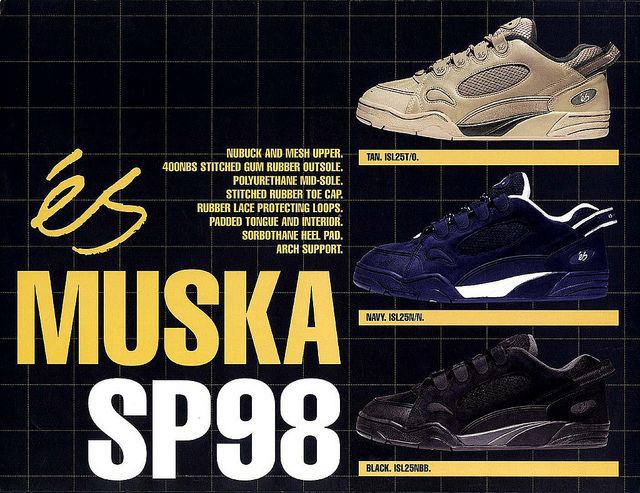
The eS Muska shown above is another great example of this aesthetic. The maximalist design elements present in these shoes often had function purposes. For example, the rubber teardrop shape on the front of the these shoes are designed to protect the upper from wear during ollies. The rubber lace loops on this shoe also prevent the laces from abrasion. The actual effectiveness of these “bells and whistles” is up for debate, and one could argue that they are there for marketing purposes and do not actually help with skateboarding.
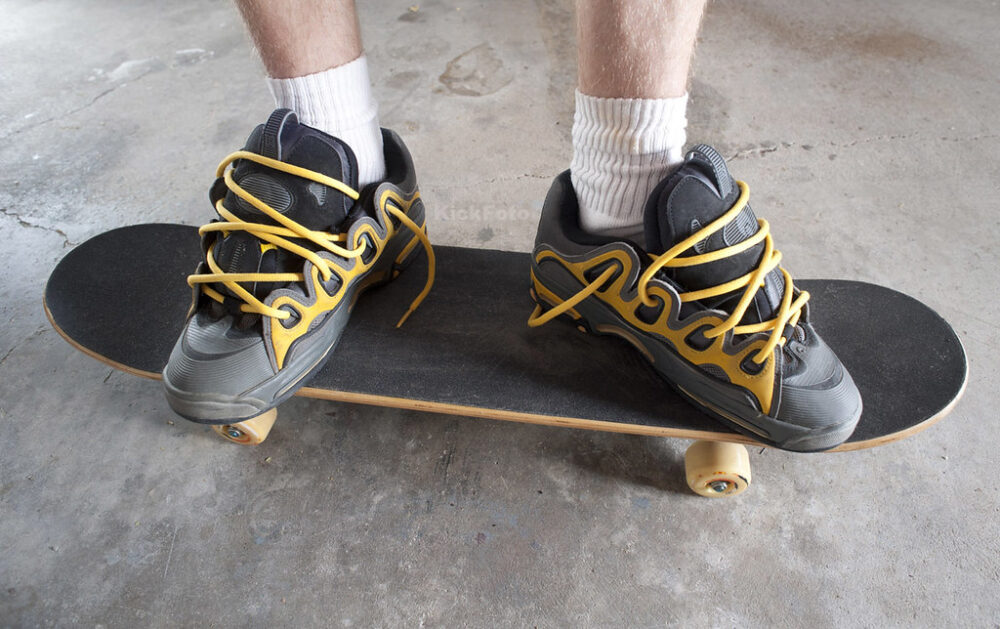
Perhaps the most extreme example of this aesthetic, the Osiris D3 (Dave Mayhew’s pro model) saw mainstream popularity after Fred Durst and Avril Levine were seen wearing them. This shoe was “one of the most popular skate shoes of all time.” [4]
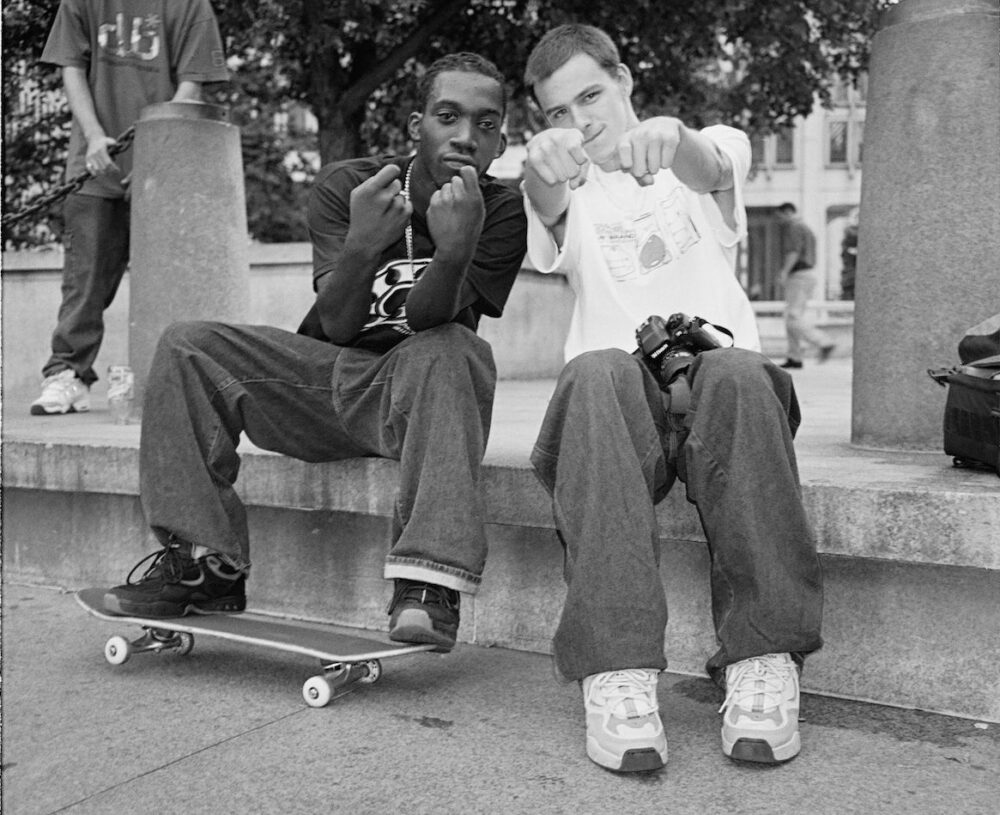

Jenkem magazine calls the eS Scheme a “Cyberpunk Baked Potato.” [7] These shoes were enormous and very loud — not for everyone!
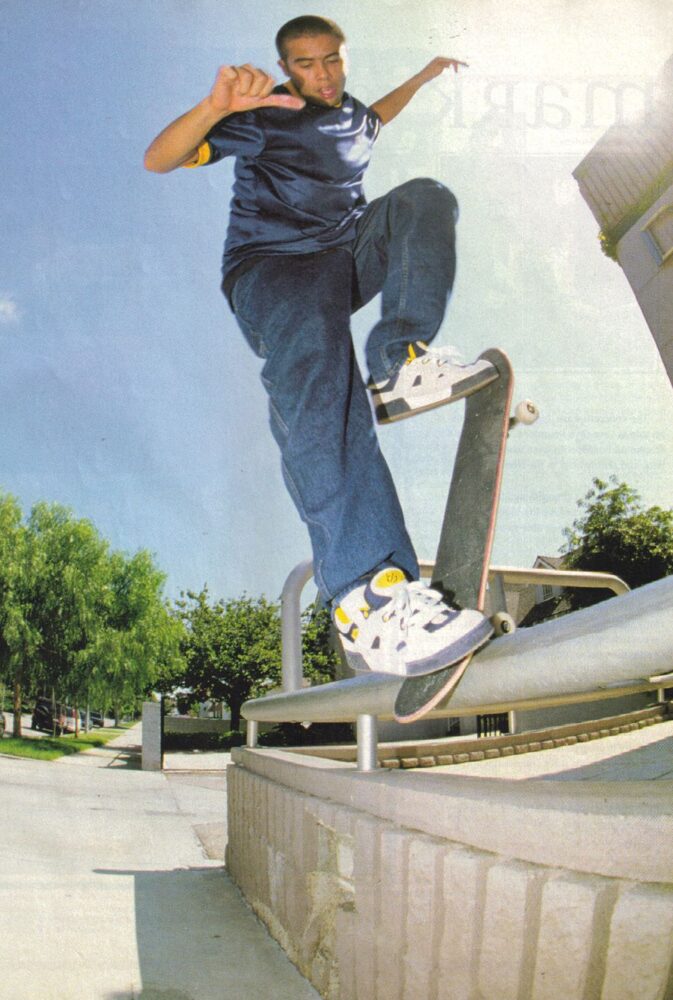
This aesthetic is a more specific instance of either the “techwear” aesthetic or the “y2k” aesthetic. The shoes were so overbuilt and had so many details that some considered them ugly. The skate industry has since moved toward more practical and minimalist designs, both to save money during production and because of consumer preference. However, the fact the these shoes look so different from anything else on the market, and due to nostalgia, brands like DC and eS have started to reissue classic models in past few years. This coincides with the current “y2K revival” movement.
Sources:
[1] An Instagram post from Goldeneracollector. This is a photo of an old catalogue in his possesion. https://www.instagram.com/p/CUJeRyVsCe2/ [2] An old eS ad for Chad Muska’s pro model. Found on Pintrest. https://www.pinterest.com/pin/309622543104998985/ [3] An image of the Osiris D3 found on google images. https://imylovesm.live/product_details/15416643.html [4] Sneaker Freaker article by Shay Colley about the Osiris D3. https://www.sneakerfreaker.com/releases/the-return-of-the-osiris-d3 [5] Image of Josh Kalis and Stevie Williams at love park, found on Twitter. https://twitter.com/REESElaflare/status/960924464056762369 [6] An image of the eS scheme found on the eS website archive. https://skateboardingstartswithes.com/ [7] Article from Jenkem Magazine by Ian Graham. “7 of the most terrifying skate shoes” https://www.jenkemmag.com/home/2013/10/31/7-of-the-most-terrifying-skate-shoes/ [8] An image of Eric Koston found on google images. https://www.google.com/url?sa=i&url=https%3A%2F%2Ffindinghimalayas.com%2F%3Fw%3Deric-koston-vans-off-75%25-zz-JeznkLsL&psig=AOvVaw0lzwBUYf0LZ_qkuiEgh5Mt&ust=1706232146410000&source=images&cd=vfe&opi=89978449&ved=0CBUQjhxqFwoTCKib456w94MDFQAAAAAdAAAAABA8

5 Comments. Leave new
[…] Aesthetics Exploration – Late 90’s / Early 00’s Tech Skate Footwear […]
I really enjoyed the discussion about the popularization of the “skate shoe aesthetic” through skating celebrities and how that changed the trajectory of the aesthetic itself. It’s interesting to learn how mass media has affected movements that originally started in garages and in neighborhood skateparks. Do you think that the popularization of the aesthetic and movement away from its roots in the counterculture helped mainstream skating in the American zeitgeist or potentially has the coopting of the aesthetic detracted from the skating movement itself?
As much as skaters hate to admit it, mainstream popularization and “posers” (people imitating the skater aesthetic that do not directly participate in the activity or culture) has kept skateboarding alive and made it far more popular than it otherwise would be simply through exposure. What usually happens is that as soon as something goes mainstream, skaters will start wearing something more obscure else in order to distinguish themselves from the “posers.”
I thought it was interesting how you discussed both the form and the function of this aesthetic, even going as far as to question the validity of the claims of functionality of certain features of different shoes. Do you think that the evolution of the “skate shoe aesthetic” is tied to the overall “skater” aesthetic, or are they somewhat independent?
There were certainly tech features on these shoes that looked functional but were actually completely useless in terms of performance. I think that these shoes are so specific to the time period that the typical “skater aesthetic” has completely moved onto something else at this point. However, I think the shoes are one of the defining aspects of the skater aesthetic (when you watch skateboarding you are always looking at the feet), and the skate shoe aesthetic is deeply tied to the overall aesthetic. The same can be said about the pants but that is a completely different topic.